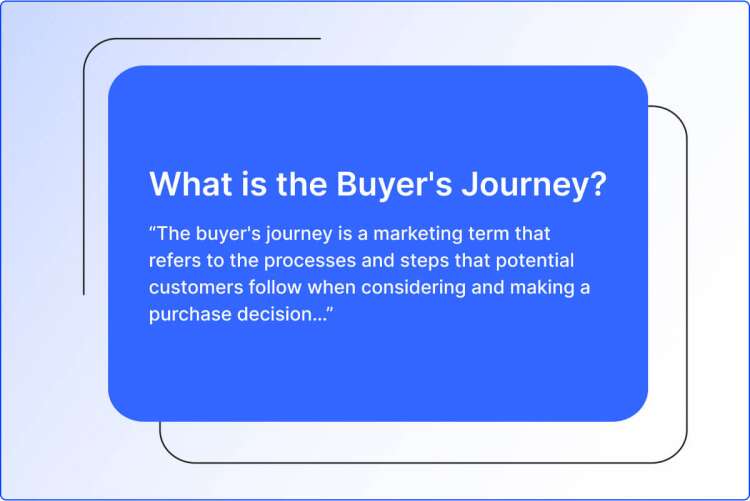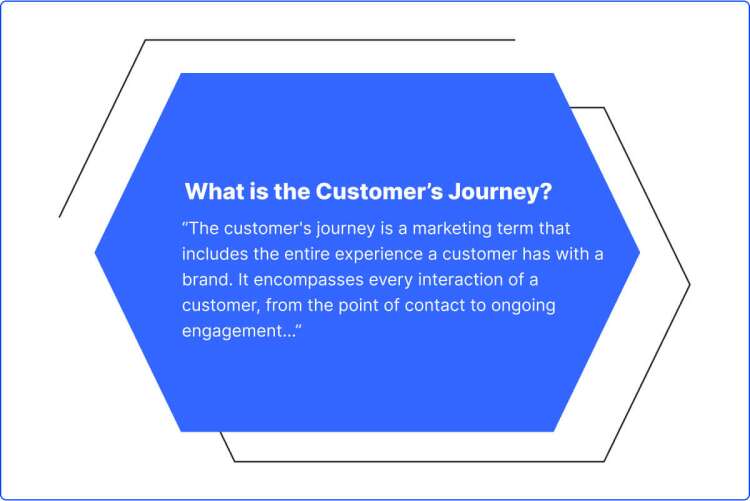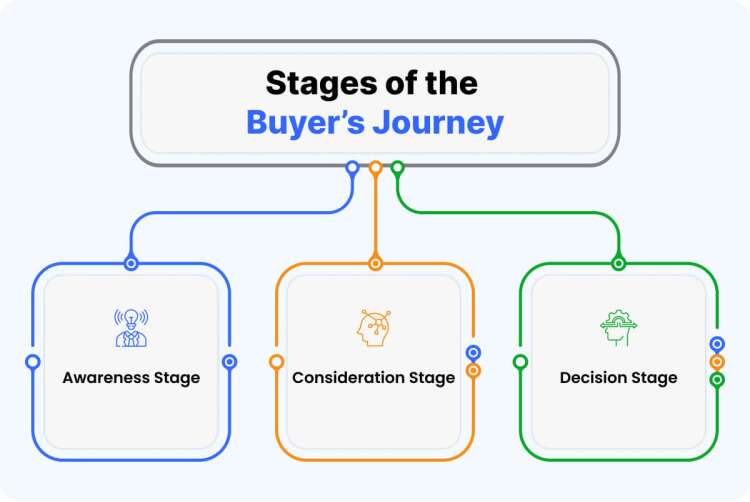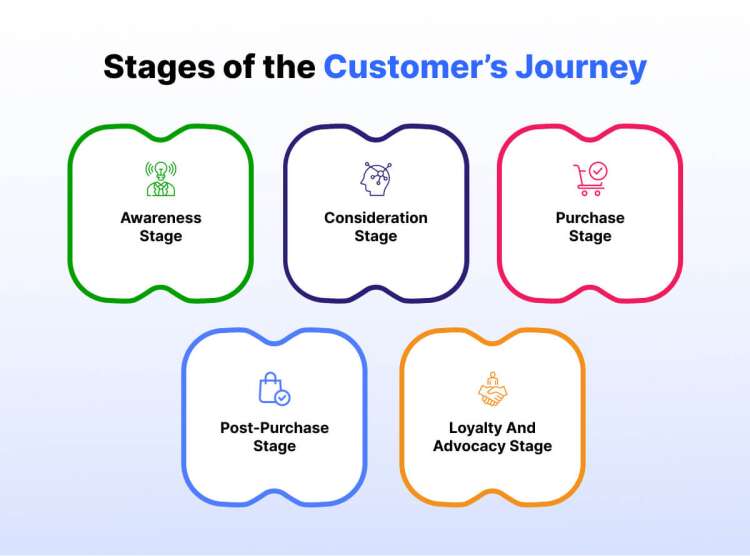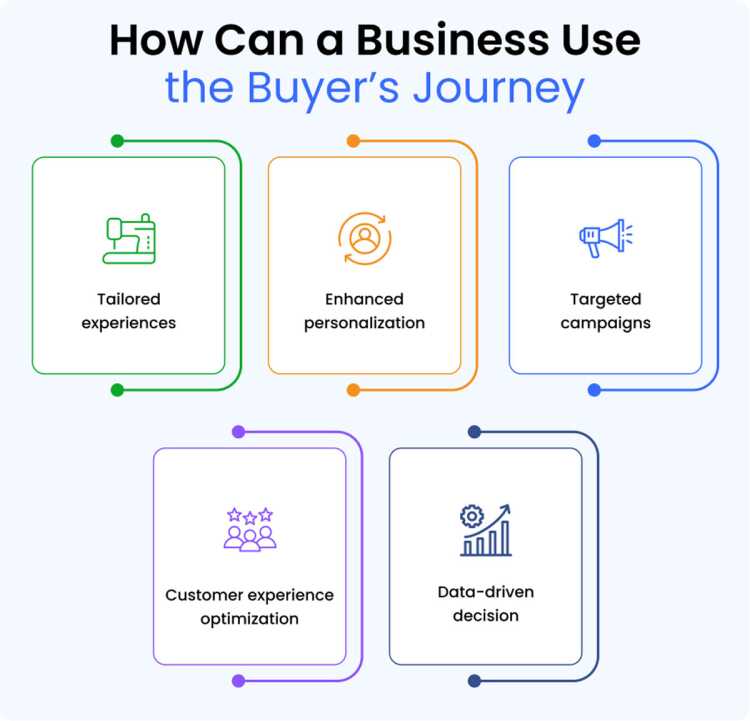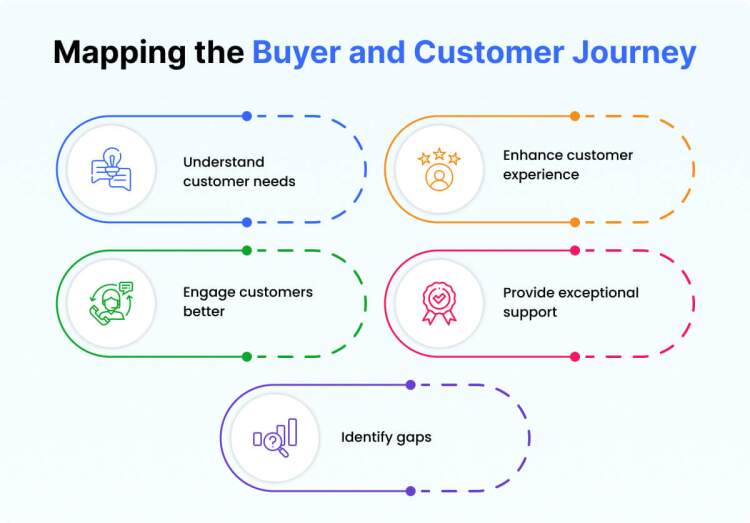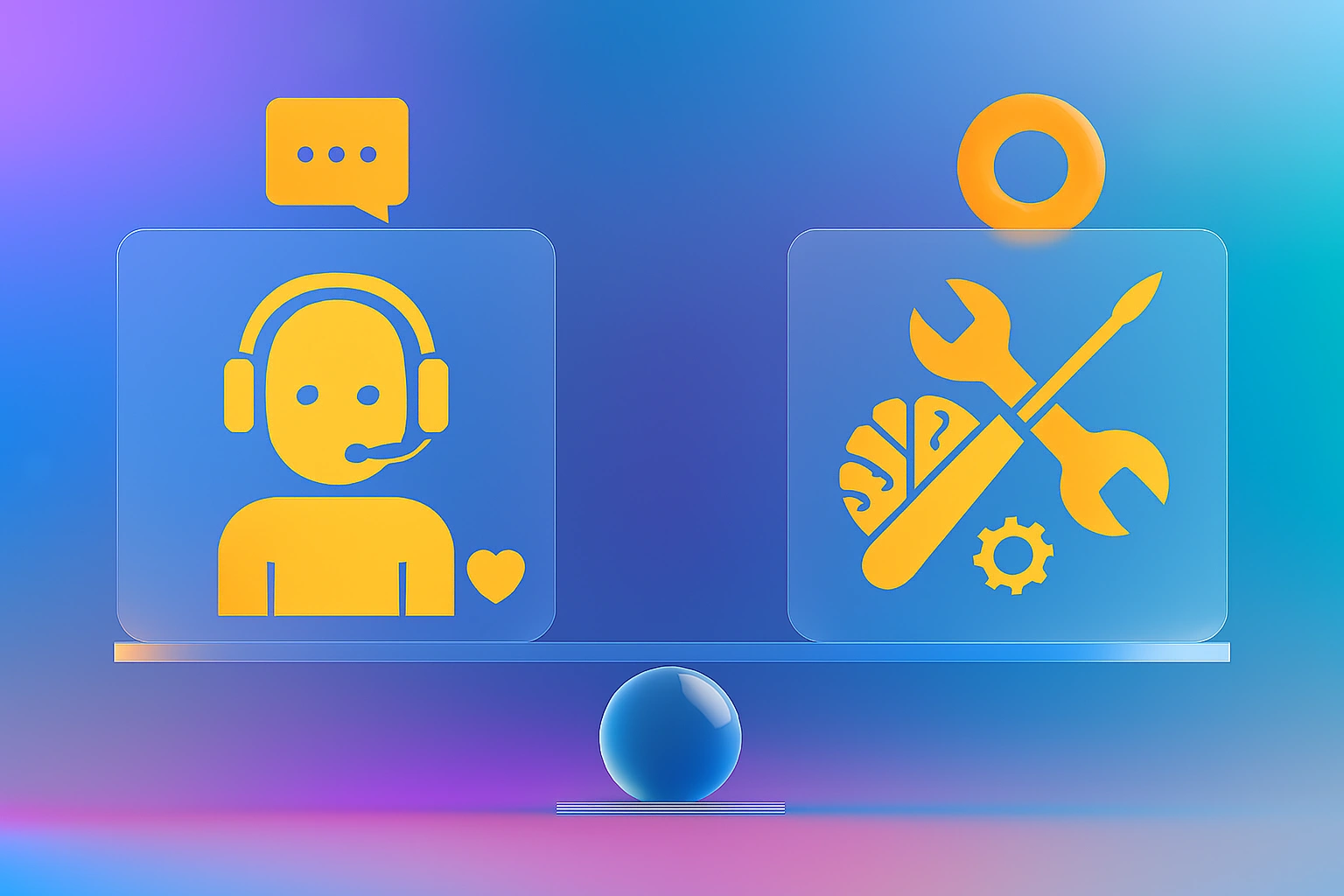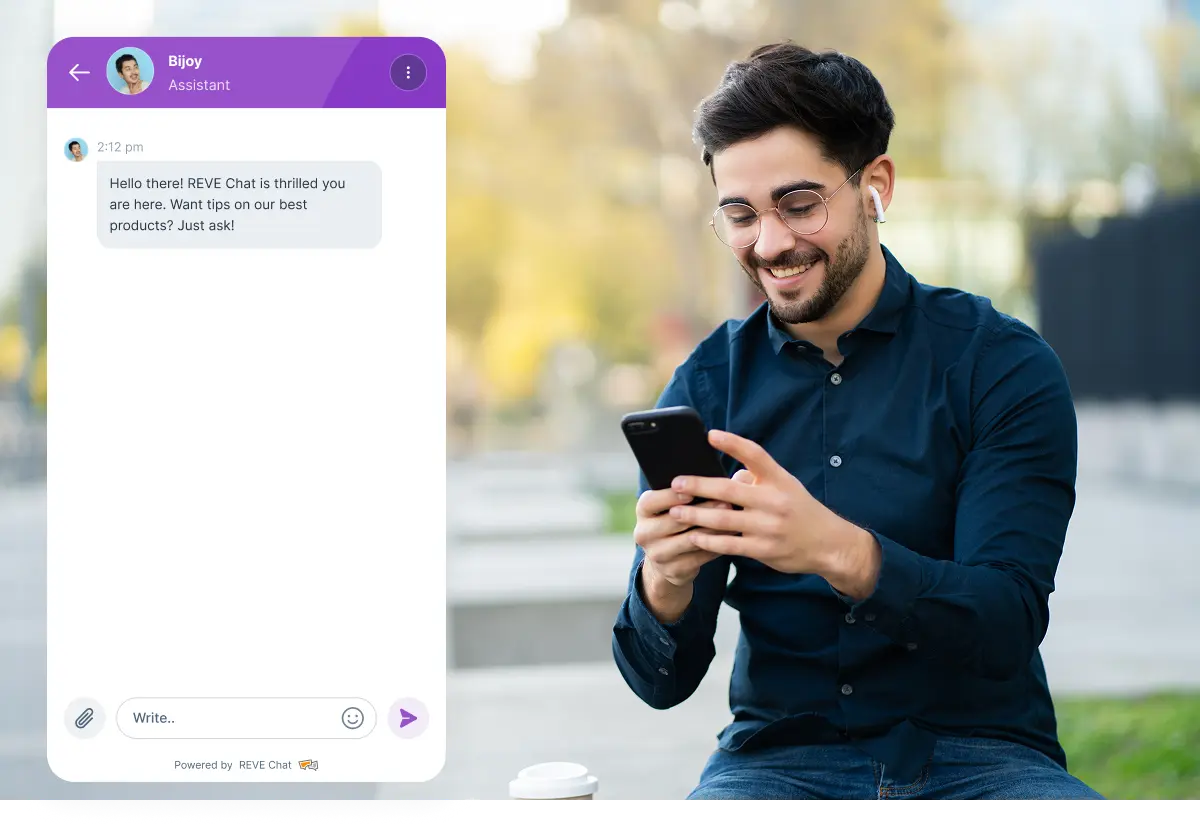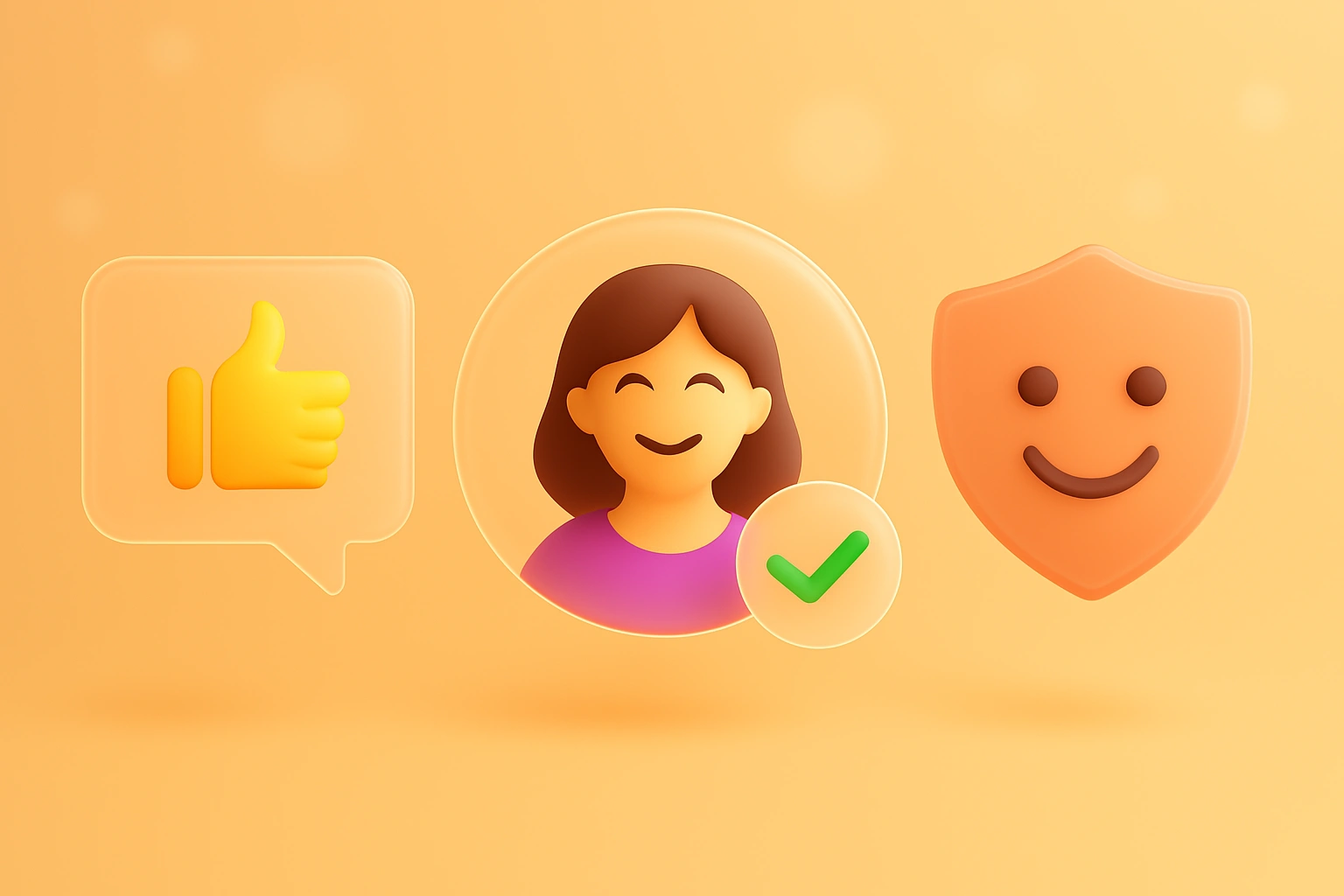Buyer Journey Vs Customer Journey – A Detailed Analysis
- May 17, 2023
- 11 mins read
- Listen

The buyer journey and customer journey are both essential aspects of the marketing process. They are key tools for businesses to understand their customers better and achieve effectiveness with marketing strategies. Both concepts are also vital processes that companies use to attract and retain customers.
These two are obviously very different concepts but are sometimes confused with one another. Even many marketing experts are not able to understand the difference between the two.
So, any attempt to understand the buyer journey vs the customer journey needs to look at the broader picture to get clarity. The broader picture is that both concepts are essential for effective marketing. Without understanding them, a business might not be able to tailor their messaging and efforts to the specific needs of the customers.
More importantly, a business can map out these journeys to get a clear insight into customer behavior and create targeted campaigns. A good understanding of both journeys is also important to create experiences that will resonate with customers and eventually help drive sales.
In this blog, we will explore the buyer and customer journey in detail and will also see how they are invaluable aspects of marketing.
But first, let’s get started with understanding what exactly the buyer journey is.
What is the Buyer’s Journey?
The buyer’s journey is a marketing term that refers to the processes and steps that potential customers follow when considering and making a purchase decision. It outlines and includes the various actions and stages undertaken by potential customers before finalizing a purchase.
By understanding the buyer’s journey, a business can align its marketing and sales strategies to better engage with customers at each stage. Mapping this journey also helps businesses tailor their marketing efforts to meet the specific needs of customers at different stages.
When a business analyzes and maps out the buyer journey, it easily identifies potential gaps in its marketing and sales processes. This proves important in making data-driven decisions to optimize the strategies, boost conversion rates, and build long-term trust with customers.
What is the Customer’s Journey?
The customer’s journey is a marketing term that includes the entire experience a customer has with a brand. It encompasses every interaction of a customer, from the point of contact to ongoing engagement. A customer journey also involves every touchpoint a customer goes through with a company, including marketing, sales, support to post-purchase support.
For a business, it’s essential to understand the customer journey to create a seamless experience that builds satisfaction and boosts loyalty. This also helps in identifying pain points and enhancing the customer experience at each stage. Based on the understanding of the customer journey, a business can align its marketing strategies to deliver consistent and personalized experiences to the audience.
Stages of the Buyer’s Journey
The buyer’s journey commonly follows three stages that work as a framework for businesses to understand how potential customers make purchase decisions. By recognizing the needs of buyers at each stage, a business can tailor its marketing efforts and engage them better.
The 3 stages of the buyer’s journey include –
- Awareness Stage – In this stage, a potential buyer becomes aware of the need or problem. The buyer will then look for a solution and seek information that can help them solve the problem.
- Consideration Stage – In this stage, the potential buyer searches for different solutions and options that can help solve their problems. The buyer will compare features, benefits, and prices to determine the right fit for their needs. After all, a buyer journey starts with research as 80% of shoppers conduct online research before making a purchase.
- Decision Stage – In this stage, the potential buyer is ready to make a purchase decision after having compared and analyzed the options available to them. Before making a purchase, a buyer may request demos or additional information or may connect with sales reps for the purchase.
Stages of the Customer’s Journey
The stages of the customer journey include the entire experience – from initial contact to ongoing engagement – that a customer has with an organization. By understanding these stages, a business can better align its marketing and sales effort and enhance the experience at each stage.
The 5 stages of the customer’s journey include –
- Awareness Stage – The customer journey starts with the awareness stage where a customer becomes aware of a product, service, or brand. For a business, the key focus at this stage is to catch the attention of the customer and make them aware of the brand and its offerings.
- Consideration Stage – In this stage, an aware customer evaluates different options available to them by assessing and comparing the features, prices, and benefits of the brand or product, or service. At this stage, a business should focus on providing the customer with detailed information so that the brand can stand out from competitors.
- Purchase Stage – The customer has selected a brand and is ready to make the purchase. At this stage, a business should focus on making the customer’s experience as smooth and hassle-free as it should be.
- Post-Purchase Stage – This stage starts the moment the customer has purchased a product. It can include onboarding, product set-up, product implementation, guidance, training, or any support that helps in the better utilization of the product or service. In this stage, the key for a business is to ensure positive experiences for customers.
- Loyalty and Advocacy Stage – When customers are happy with the experiences provided to them, they can become loyal to the brand. Loyal customers do repeat purchases and recommend the brand to others. At this stage, the key goal for a business is to nurture loyalty and advocacy.
Importance of the Buyer’s Journey For a Business
The buyer’s journey holds big significance for businesses as it provides insight into customers’ needs and preferences. When this insight is available, a business can take a data-driven approach to optimize the customer experience and guide marketing strategies.
Some other importance of the buyer journey includes –
- Tailored experiences – The buyer’s journey helps businesses get an understanding of the pain points of their target audience, resulting in the creation and delivery of tailored experiences.
- Enhanced personalization – Based on the buyer journey information, a business can personalize its messaging and communication to better meet the needs of customers at each stage. After all, 91% of consumers would love to shop with brands that give relevant offers and recommendations.
- Targeted campaigns – When a business maps the buyer journey, it can effectively align its marketing and sales strategies which can help in creating targeted campaigns.
- Customer experience optimization – Mapping this journey can help businesses have a better knowledge of the touchpoints and interactions which can prove helpful in optimizing the customer experience at each stage.
- Data-driven decision – A buyer journey gives valuable data that can be used to analyze customer behavior and engagement metrics, resulting in optimized marketing and sales strategies.
Importance of the Customer’s Journey for a Business
The customer’s journey holds a big value for businesses as it helps them improve the customer experience and personalize interactions. When a business understands the customer journey, it’s better able to drive retention and build loyalty.
A business needs the customer’s journey for many reasons, including –
- A customer journey is a marketing tool to gain insights into the customer’s pain points and needs.
- Mapping the customer journey enables businesses to tailor their products and experiences, resulting in improved satisfaction.
- A business can optimize every touchpoint and interaction when it has an understanding of the customer journey which can lead to higher retention rates.
- A business can deliver personalized and relevant experiences only when it’s aware of the customer’s need at each stage of the journey.
- Precise targeting and messaging are not possible unless a business maps the customer journey and tailors the marketing strategies accordingly.
- By focusing on the customer journey, a business can easily nurture long-term relationships with customers and foster loyalty that often results in repeat business.
Mapping the Buyer and Customer Journey
Mapping the buyer and customer journey is key to success for a business as it gives a comprehensive understanding of the customers. By mapping the journey, a business can optimize its marketing and sales efforts and provide great experiences to customers at each stage.
Here are some key reasons that highlight the importance of mapping the buyer and customer journey –
- Understand customer needs – A business that maps the buyer and customer journey gets insights into the needs and behaviors of potential customers. This understanding helps businesses tailor their marketing, sales, and customer support efforts and meet the needs of customers.
- Enhance customer experience – Mapping a buyer and customer journey is vital to identifying and improving touchpoints and interactions for the entire customer lifecycle journey. This enables businesses in delivering a seamless, and personalized experience across all channels.
- Engage customers better – The buyer and customer journey mapping is essential for effectively engaging customers at each stage of the journey by optimizing the sales and marketing efforts. When customers are engaged better, it always increases the chances of conversion and customer acquisition.
- Provide exceptional support – When a business maps the post-purchase stages, it’s able to identify opportunities for offering great support and provide proactive solutions to customer needs. This kind of support always forms the basis of long-term relationships and loyalty.
- Identify gaps – Journey mapping is very helpful in knowing the gaps or areas where the customer experience can be enhanced. When gaps the identified, a business can proactively address customer issues and take a lead in the market.
Key Similarities and Differences Between the Buyer and Customer Journey
While both the customer and buyer journey share a customer-centric focus, they differ in goals and audience. In the case of customer vs consumer, if the focus of the buyer journey is on the pre-purchase stages and conversion, for the customer journey it’s the entire customer lifecycle that matters.
Here are some of the key similarities and differences between the buyer and customer journey –
The Similarities
- Both have a major focus on the customer. The focus of both journeys is to understand the needs and preferences of customers to provide a better experience.
- Both journeys involve the mapping of various touchpoints to understand all the interactions an individual has with a brand.
- Both journeys aim to identify key moments of engagement and communication.
- Both journeys involve decision-making throughout the customer’s engagement with the brand at various stages.
The Differences
- The buyer journey focuses on the pre-purchase stages while the customer journey includes the entire lifecycle of a customer’s interactions with a brand.
- The buyer journey focuses on all potential customers who consider a purchase while the customer journey is concerned with all individuals who have interacted with a business.
- Driving conversion and acquiring new customers is the primary goal of the buyer journey whereas the customer journey is concerned with broader goals, including customer satisfaction and retention.
- Touchpoints in the buyer journey are more geared towards marketing while the customer journey includes a wider range of touchpoints for ensuring consistent experience.
Support Your Buyer and Customer Journey with REVE Tools
The buyer and customer journey is key to understanding the needs of customers and ensuring excellent experiences for them throughout the various stages. At REVE Chat, we understand that a business needs to map both journeys to get a knowledge of their customers and serve them better.
We have a range of customer engagement tools that can be used to measure the level of interactions that a customer has across touchpoints. Our AI-powered chatbots can prove very helpful in automating responses and ensuring quick replies to customer queries at any stage.
More so, we have video chat and co-browsing software that can help in offering visual engagement. These tools ensure help in the way customers expect.
Our live chat software can be paired with the chatbot to offer hybrid support. With this kind of support, a bot can handle routine queries while a human agent can handle complex situations.
Conclusion
For customers, experience matters more than anything else. If a business is able to provide great experiences, customers can become loyal to them. Offering this kind of experience is not possible unless a business understands and maps the buyer and customer journey.
At REVE Chat, we have high-quality customer support tools to engage and interact with customers at each stage of their journey.
You can sign up and check our tools and see how they fit into your business’ specific needs.


